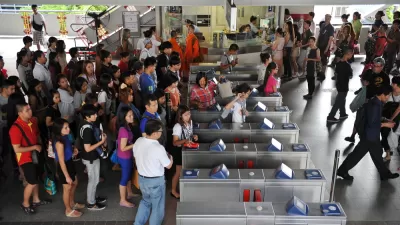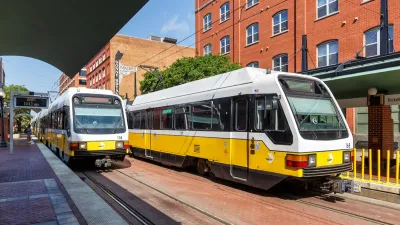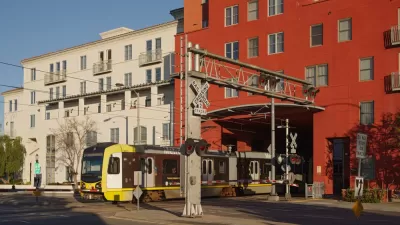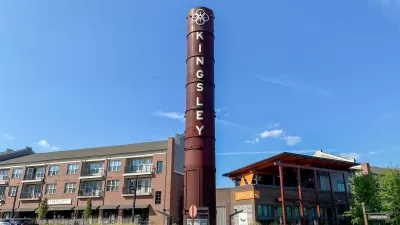Jarrett Walker outlines the conditions under which transit serves the greatest number of travelers. Maximizing ridership, he argues, requires thinking like a business and catering to demand.

In an article on his blog, Jarrett Walker writes, "Maximizing ridership is like maximizing the number of customers for any business. You have to think like a business, and the first thing businesses do is choose which markets they will enter. Unlike governments, businesses feel no obligation to provide their service in places where they would spend a lot of money to serve very few people."
Walker differentiates ridership from transit coverage, which is often a politically-motivated goal. "Commentators sometimes criticize transit authorities for low ridership, as though transit were a failing business. But transit authorities are rarely directed to maximize ridership as their primary goal, so they're not failing if they don't."
"A more precise question is: 'what percentage of our resources should our transit authority spend pursuing maximum ridership?' When transit authorities answer that question, then everyone knows what the purpose of the service is."
Walker explains in detail the factors behind transit demand. They include:
- Frequency of service: "People who are used to getting around by a private vehicle (car or bike) often underestimate the importance of frequency, because there isn't an equivalent to it in their experience."
- Overall diversity of trips served (as opposed to personalized service)
- Travel time, including time spent waiting
Finally, Walker discusses how the urban landscape affects ridership, focusing on density, walkability, linearity, and proximity.
FULL STORY: Explainer: The Transit Ridership Recipe

Alabama: Trump Terminates Settlements for Black Communities Harmed By Raw Sewage
Trump deemed the landmark civil rights agreement “illegal DEI and environmental justice policy.”

Study: Maui’s Plan to Convert Vacation Rentals to Long-Term Housing Could Cause Nearly $1 Billion Economic Loss
The plan would reduce visitor accommodation by 25% resulting in 1,900 jobs lost.

Planetizen Federal Action Tracker
A weekly monitor of how Trump’s orders and actions are impacting planners and planning in America.

Waymo Gets Permission to Map SF’s Market Street
If allowed to operate on the traffic-restricted street, Waymo’s autonomous taxis would have a leg up over ride-hailing competitors — and counter the city’s efforts to grow bike and pedestrian on the thoroughfare.

Parklet Symposium Highlights the Success of Shared Spaces
Parklets got a boost during the Covid-19 pandemic, when the concept was translated to outdoor dining programs that offered restaurants a lifeline during the shutdown.

Federal Homelessness Agency Places Entire Staff on Leave
The U.S. Interagency Council on Homelessness is the only federal agency dedicated to preventing and ending homelessness.
Urban Design for Planners 1: Software Tools
This six-course series explores essential urban design concepts using open source software and equips planners with the tools they need to participate fully in the urban design process.
Planning for Universal Design
Learn the tools for implementing Universal Design in planning regulations.
Caltrans
Smith Gee Studio
Institute for Housing and Urban Development Studies (IHS)
City of Grandview
Harvard GSD Executive Education
Toledo-Lucas County Plan Commissions
Salt Lake City
NYU Wagner Graduate School of Public Service





























